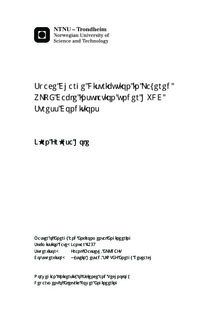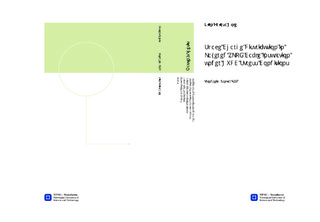| dc.description.abstract | In order to connect offshore installations with maximum effectiveness, high voltage direct current cables are essential. Because of the many benefits of extruded polymer insulation, such as low price and ease of manufacture, improved solutions suitable for higher voltages are ever in demand.
One of the challenges related to HVDC cable installations is high power electrical connectors. Cable joints and terminations are considered critical components in a cable system, and thus demand extensive research and improved knowledge in order to enable the next generation of installations.
Material interfaces are inevitable in connectors, and the aim of this Master s Thesis is to examine the space charge accumulation and field development in insulation containing a material interface under DC stress. This has been done through experimental work, applying voltage to layered samples consisting of a polymeric insulation material developed in particular for use in HVDC installations, and measuring the resulting development of space charge and field distribution. The samples consisted of one cross-linked layer cross-linked once again with another layer of the same material, mimicking the interface created in connections.
The space charge distribution has been measured using the Pulsed Electroacoustic Method for flat specimens. Measurements have been performed with an average field stress of 20, 30 and 40kV/mm, and a duration of 8 to 19 days. Two series of measurements have been conducted on layered samples with a field of 30kV/mm, in order to examine reproducibility, and one series of measurements has been performed on a single-layer sample with a field of 30kV/mm as a reference. In order to examine a possible difference in the conductivity of the layers, the degree of crystallinity of layered and unlayered samples has been measured. Since there is a strong correlation between the degree of crystallinity and conductivity, this could give a good indication of possible differences.
No particular accumulation of charge was observed in the interface of the samples, indicating no increased risk in interfaces between double cross-linked and cross-linked polymer of the material examined. The degree of crystallinity of the layered and unlayered samples was similar, indicating that no charge would build due to a difference in conductivity, and supporting the PEA measurements.
Accumulated hetero charge in the polymer close to the anode, unrelated to the material interface, caused a significant increase in field strength on the anode side of the samples. The accumulations of hetero charge in the samples stabilised in all of the samples, reaching stability faster with a stronger applied field. The amount of charge also showed a positive correlation with the applied field. This development can in all likelihood be ascribed to the hetero charges positive influence on the field strength, combined with the field s lowering of the potential barrier for electron extraction at the anode. As these mechanisms reach equilibrium, stability is attained. The reason for the hetero charge accumulation in the first place can probably be attributed to Schottky injection of electrons at the cathode, in combination with a faster rate of electron transport in the polymer. In accordance with the hetero charge in the polymer by the anode, positive charge accumulated at both electrode-polymer interfaces.
The distribution of charge accumulation in the rest of the bulk of the material showed no reliable trends throughout the measurements, except for a tendency towards negative net charge, indicating trapping of electrons in the polymer bulk.
In addition to the mechanisms mentioned, ions may have contributed to charge accumulation, but given the results obtained, no definitive conclusion can be made with regards to this possibility.
Earlier examinations of samples without interfaces have obtained similar results, supporting the conclusion that an interface of the kind examined has little to no effect on the accumulation of charge. | |

